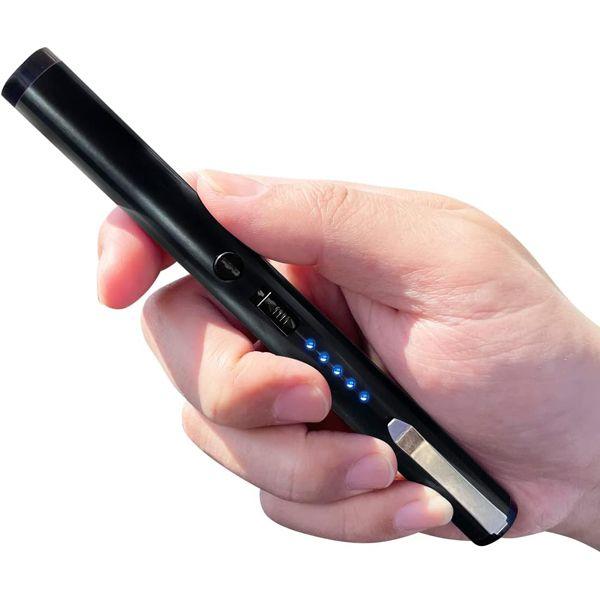Table of Contents
- Effectiveness of Stun Guns Against Different Types of Clothing
- Factors That Influence Stun Gun Performance Through Fabric
- Safety Considerations When Using a Stun Gun on a Clothed Target
- Expert Tips for Maximizing Stun Gun Impact in Real-World Situations
- Concluding Remarks
Effectiveness of Stun Guns Against Different Types of Clothing
Stun guns rely on delivering a powerful electrical charge to disrupt the target’s nervous system. However, the type and thickness of clothing can significantly influence the effectiveness of this electric circuit. Thin fabrics like cotton or polyester typically allow the electrical current to pass through with minimal resistance, making the stun gun highly effective. On the other hand, heavily layered or insulated clothing-such as heavy jackets, thick denim, or multiple layers-can disperse or weaken the electrical charge, reducing its impact. Understanding this dynamic is crucial for anyone carrying a stun device for self-defense, as the difference between light and heavy clothing can mean whether the device immobilizes an attacker or just causes minor discomfort.
Factors to consider include:
- Material thickness: Thinner materials allow better conductivity.
- Fabric type: Synthetic fabrics may conduct electricity differently than natural fibers.
- Number of layers: Multiple layers increase resistance and can limit penetration.
- Moisture content: Damp or wet clothes can improve conductivity and stun gun effectiveness.
Factors That Influence Stun Gun Performance Through Fabric
Several key elements dictate how effectively a stun gun can deliver its electric charge through clothing. Primarily, the thickness and type of fabric play pivotal roles; dense materials like leather or multiple layers of denim can significantly reduce the stun gun’s impact by acting as a barrier. Conversely, lightweight fabrics such as cotton or polyester allow the electrical current to pass through more easily. Additionally, the moisture content in the fabric greatly affects conductivity-wet or damp clothes can enhance the stun gun’s penetration, while dry fabrics may hinder it.
Other factors to consider include:
- Contact pressure: Firm, direct contact ensures better current flow compared to loose or glancing touches.
- Distance between electrodes: The spacing influences the spread and depth of the electric shock.
- Age and condition of the stun gun: A well-maintained device with fresh batteries performs optimally, overcoming fabric resistance more effectively.
Safety Considerations When Using a Stun Gun on a Clothed Target
When deploying a stun gun on a target wearing clothing, it is crucial to understand how fabric layers can impact effectiveness and safety. Different materials offer various levels of resistance; thick or insulated clothing like leather or multiple layers may reduce the electrical current’s impact, potentially requiring closer contact or longer application to achieve the intended effect. However, this raises safety concerns-excessive or prolonged use can cause unintended harm, including burns or nerve damage. Always ensure compliance with local laws and employ a measured approach to minimize risks to both the user and the target.
Keep these important safety tips in mind:
- Maintain proper distance: Close contact maximizes effectiveness and reduces the need for multiple applications.
- Avoid sensitive areas: Aim for large muscle groups to prevent injury, avoiding the head, neck, or chest when possible.
- Do not use on vulnerable individuals: Those with heart conditions, pacemakers, or pregnant individuals should never be targeted with stun devices.
- Inspect device regularly: Ensure the stun gun is in proper working condition to avoid malfunction during critical moments.
Expert Tips for Maximizing Stun Gun Impact in Real-World Situations
To enhance the effectiveness of a stun gun in real-world scenarios, targeting exposed skin is crucial whenever possible. Clothing such as thick jackets, heavy coats, and layers can dramatically reduce the electrical current’s ability to reach the body, diminishing the overall impact. When wearing multiple layers, aim for thinner clothing areas like sleeves or the neck. Additionally, maintaining a firm and steady hand while deploying the device ensures consistent contact, maximizing the stun gun’s energy transfer. Avoid bouncing or sliding the probes across the surface, as this can interrupt the current flow and reduce effectiveness.
Another vital consideration is proximity and timing. For optimal results, the stun gun should be applied as closely as possible to the target within the device’s specified range-usually just a few inches. Practicing quick deployment under pressure helps avoid hesitation, which can give an attacker time to react or evade. Remember to engage the stun gun for the recommended duration, typically 3 to 5 seconds, to ensure sufficient muscle disruption. Keep in mind that stun guns work best as a deterrent or temporary incapacitation tool, so pairing their use with a clear escape strategy is always recommended.
- Prefer exposed skin targets like arms, neck, or legs.
- Maintain steady probe contact to prevent current interruption.
- Use the stun gun within close range for maximum impact.
- Deploy quickly and confidently to avoid giving the attacker time.
- Hold the stun gun engaged long enough for full muscle disruption.
Concluding Remarks
In conclusion, while stun guns are designed to incapacitate by delivering a powerful electric shock, their effectiveness can be influenced by the type and thickness of clothing worn. Understanding the limitations and proper use of these devices is essential for anyone considering them for personal safety. Remember, no self-defense tool is foolproof-training, awareness, and responsible use are key to maximizing your protection. Stay informed, stay prepared, and always prioritize safety.Check Our Other Blogs
- StunGun – Your Trusted Source for Stun Guns, Laws, and Self-Defense Tips
- PepperSprayLaws – Your Trusted Resource for Pepper Spray Information
- StunGunLaws – Your Trusted Guide to Stun Gun Legality and Safety





